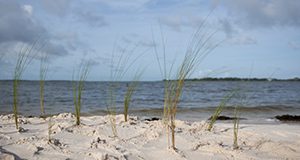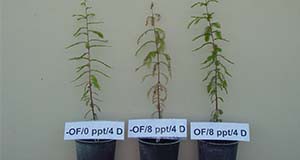The impacts of sea level rise on ecosystems and natural resources are a major concern in Florida, especially in low-lying coastal areas such as south Florida. Sea level rise can impact many aspects of Florida's economy, including urban development, agriculture, infrastructure, and natural areas. This 16-page document introduces, evaluates, and summarizes selected available online sources and tools to educate diverse stakeholders and concerned local residents on important aspects of sea level rise. Written by Young Gu Her, Ashley Smyth, Jiangxiao Qiu, Elias Bassil, Ulrich Stingl, and Laura Reynolds, and published by the UF/IFAS Department of Agricultural and Biological Engineering, June 2020.
https://edis.ifas.ufl.edu/ae543
Tag: Sea Level Rise in Florida
How to Chemigate Salinity-Stressed Plants with Hydrogen Peroxide to Increase Survival and Growth Rates
Man-made activities can induce climate change and global sea-level rise, posing threats to the survival and growth of coastal vegetation in Florida. This three-page fact sheet explains how to ensure plant survival and facilitate the growth of coastal vegetation threatened by sea-level rise and the resulting oxygen deficiencies and saline stresses. Written by Guodong Liu, Yuncong Li, Kimberly Moore, Kim Gabel, Lei Wu, and Rafael Muñoz-Carpena, and published by the Horticultural Sciences Department.
http://edis.ifas.ufl.edu/hs1280

